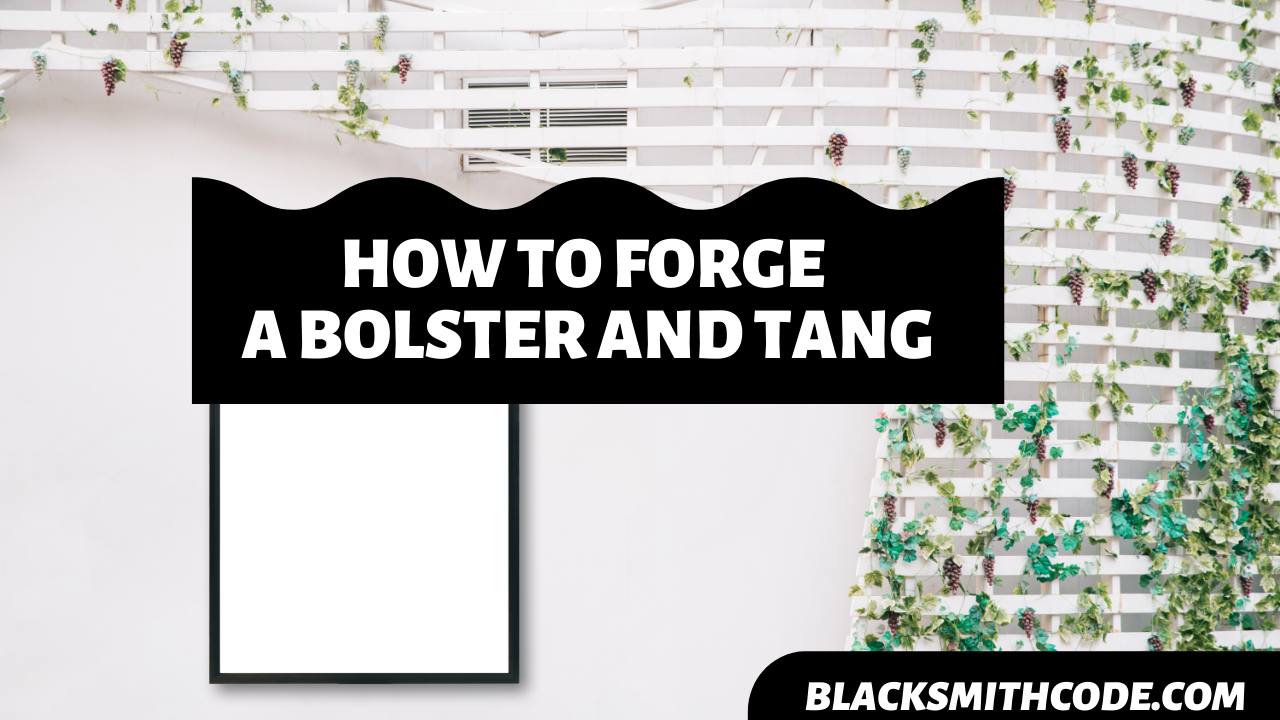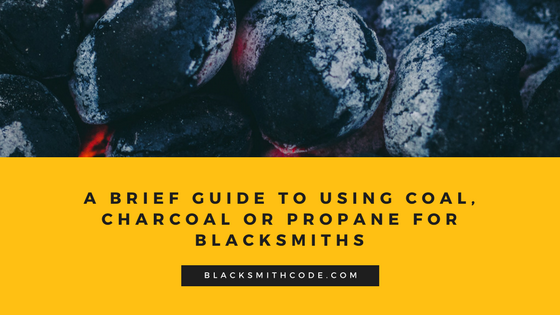You might be wondering about the possibility of forging a bolster and tang. Or ask the question, what is a bolster and tang? There is a solution to this problem.
Bolsters and tangs are parts of a knife. There are different parts: the blade, the spine, the bolster, the tang, the rivet/fastener, the butt, the handle, the heel, the edge, the tip, and the point.
The tang is a portion of the blade that connects to the handle. It is also a component that extends to the stock material. Some people refer to the tang as the shank.
A bolster is a kind of support under work. It usually comes in U shape and forged from metals. It is most times put under hot action to assist drifting operations.
Essentials
To forge your bolster and tang perfectly, you should make use of the right set of tools. These tools should be available because you will need them a great deal. Some of the tools to use when forging include;
Forge
Chisel
Hammer
Anvil
Punch
There are several steps you should take when forging your bolster and tang. Follow these steps duly, and you will get a great output. Some of the steps to follow include;
Instructions on How to Forge a Bolster and Tang
Step 1: Get a Steel Rod
For you to forge a bolster and tang, you have to get a steel rod. Before you form, get a steel rod for your forging. You should get a rectangular steel rod to form your bolster.
Step 2: Heat the Steel Rod
You should place the steel rod in a forge for heating. You should heat the steel rod to a very high temperature. The higher the temperature of the steel rod, the easier it is to forge the rod.
The steel rod becomes very malleable when you heat it, especially when it is red hot. So, this assertion is crucial when forging bolster and tang.
Step 3: Cut Your Size
As long as the steel rod is hot, it is easy to build it. You should reduce the size of the steel you need from the rod. To lessen the steel rod, you should follow the following steps:
Quick Steps
- Remove the steel rod from the forge after heating it to a very high temperature.
- Place the hot rod on an anvil.
- Get a chisel to cut your rod; place it on the preferred point on the rod and heat with a hammer to cut it.
Step 4: Heat the Rod Frequently
You have to heat the rod continually to enjoy forging. It might be stressful and frustrating if you hammer a metal while it is cold. You should make sure you frequently place the rod in a forge for heating. Maintaining the right temperature is crucial while forging bolster and tang.
Step 5: Forge the End Segment
Forging the end segment of the rod is easy. All you should do is to make the one end of the rod round, the middle thin, and the other end flat. The flat end should have the largest proportion of length while the round end should have the least.
Quick Steps
- Beat the rod with a hammer while the rod is hot.
- Beat the middle into a thin shape first. It will enable you to beat the other parts easily.
- Beat the section with the larger length into a flat shape.
- Beat the separate section into a round shape.
- Flatten the surface of the round shape.
Step 6: Make Your Holes
You have to make your holes in the rod. Make use of a punch and hammer eye drift, if necessary, to drill your dip into the hot metal.
Forge a hole in the round part of the rod through the flat surface. After creating the hole, the rounded part should be like a large ring.
Forge series of holes into the flat part of the rod. The holes should align so that it will look neat and organized.
Step 7: Annealing
After forging your bolster, you should anneal it. Annealing will help your bolster become tough and hard. To anneal, you should;
Quick Steps
- Reheat the bolster in a forge till it becomes red hot.
- Retrieve the hot bolster from the forge.
- Place the bolster in wood ash or leave in the open air to allow it to cool steadily.
After cooling, you can further forge your bolster. The annealed bolster will be tougher and harder than the former.
Step 8: Grind Your Bolster
After annealing, there will be scales and particles on the surface of the bolster. These scales make the bolster appear odd and old. To eliminate these scales, you have to grind the bolster.
You can grind the bolster with a belt grinder or other types of grinding tools available. These tools will not only remove the scales but also make it shine. You can also rub the surface of the bolster with sandpaper.
FAQs on How to Forge a Bolster and Tang
Question
Does every knife have a bolster and tang?
All knives should have a bolster and tang; they are parts of a knife. A standard knife should contain them only if the blacksmith doesn’t seem they should have. Ideally, a blacksmith should forge a bolster and tang for the blade.
Question
Are bolster and tang useful in a knife?
The bolster and tang are very important in a knife. The tang is useful when it comes to forging a handle for your knife. The bolster is also very important in forming a knife. These parts of a knife help build a blade.
Question
Is it possible to forge my bolster before my knife?
It is possible to forge your bolster before forging your knife. Most times, when forming the blade of a knife, you will have to build the bolster before forging out the edge.
Video on How to Forge a Bolster and Tang
Warnings
There are several precautions you should take when forging a bolster and tang. Some of these precautions are;
- Always make use of the appropriate tool for every task.
- Do not make use of damaged instruments.
- You should perform check-ups on your devices and machines before using them.
- You should beware of a fire outbreak.
- Always follow safety rules and regulations.
References
1. https://www.youtube.com/watch?v=XDJf_pb7kNI
2. https://www.youtube.com/watch?v=dsVDSOBjI_8
3. https://www.iforgeiron.com/topic/40690-forming-a-chisel-tang-38-bolster/
4. https://www.youtube.com/watch?v=PllOZZl4pnc
5. https://www.bladeforums.com/threads/how-would-you-go-about-integral-build.1402499/




